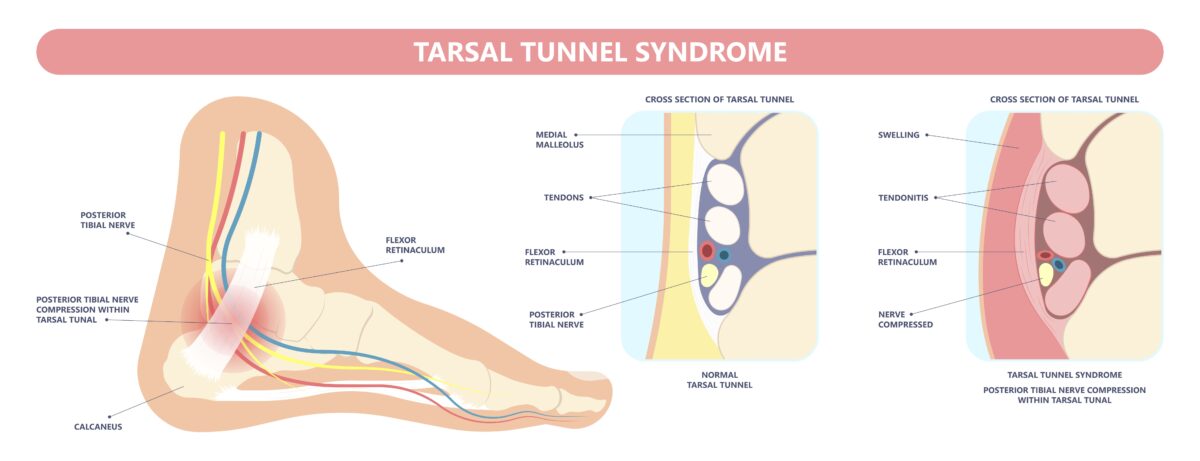Tarsal Tunnel Syndrome
This article does not constitute as medical advice.
If you are experiencing symptoms, contact your doctor or make an appointment.
This article does not constitute as medical advice.
If you are experiencing symptoms, contact your doctor or make an appointment.
The posterior tibial nerve runs through the heel into the sole of the foot.
Tarsal tunnel syndrome occurs when compression or pressure upon this nerve or inflammation of tissues around the nerve result in foot, ankle, and toe pain. This condition is similar to its wrist counterpart, carpal tunnel. Patients can typically treat this painful syndrome at home with rest. Learn more about how you get tarsal tunnel and how you can prevent it here:
While the exact cause is unclear, experts have explained that several contributing factors can lead to this condition. All involve putting pressure on or causing trauma to the ankle.
This condition is felt through pain in the foot. Identically, patients describe this feeling to be similar to carpal tunnel in the wrist. The specific sensations of tarsal tunnel include:
Burning pain: A burning or tingling sensation in the foot made worse by activity
Pins and needles: Numbness or weakness in the foot
Shooting pain: A shock of pain that jolts up the leg
If you are experiencing symptoms of tarsal tunnel, you should schedule an appointment with your podiatrist. They will diagnose you by examining the nerves in your feet by tapping them. In addition, they may feel the area for any growths on the inside of your foot near the tunnel. Here is how you can prevent and treat this condition:
Prevention:
Treatment:
